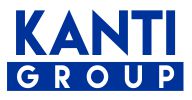What Type of Concept is Right for Me?
This requires thorough analysis and comprehension of the internal and external factors that lead to success.
Internal factors include: facility or location, performance, design, environment, current custom information (if this is a conversion) and occasion-based analysis.
External factors include: demographic and lifestyle analysis of the local area, work-force and visitors. In certain areas, traffic count may also be an important factor to consider.
Comprehension also requires an understanding of the businesses in the area—what the restaurant and bar volume levels are, for example.
Finally, how do I put this information together so it makes sense and leads to an actionable plan?
I Have a Restaurant (Bar) Idea.
How Do I Turn it Into a Real Concept?
There’s more to a concept than just an idea.
To move from idea to reality requires a Concept Blueprint—a statement that lays out the details of the concept. The details of the concept should include: its key attributes; the standards; the menu direction; food and beverage; table top; uniforms; china; décor; layout; and, marketing strategies.
But there’s more. The reader of a great Concept Blueprint will feel the heart and soul of the concept itself.
Finally, the other side of reality must be represented as well: financial projections.
How Can I Transform the Idea Into a Thriving Restaurant (Bar)?
Once the Concept Blueprint has been developed, follow the Blueprint to a four-walls profit machine.
- Identity development: decide on a name, color scheme, logo
- Develop a training and concept manual
- Develop an implementation plan
- Create cost control and operational systems
- Menu development that includes: menu design; recipe development and costing; nutritional analysis; strategic pricing; mix projections; and, menu engineering.
- Design touch points that include: decorative touches; wall décor; backbar enhancements; communication pieces; table top; china/glassware/flatware; uniforms; music; and, lighting.
- Develop and implement marketing and promotional strategies.
